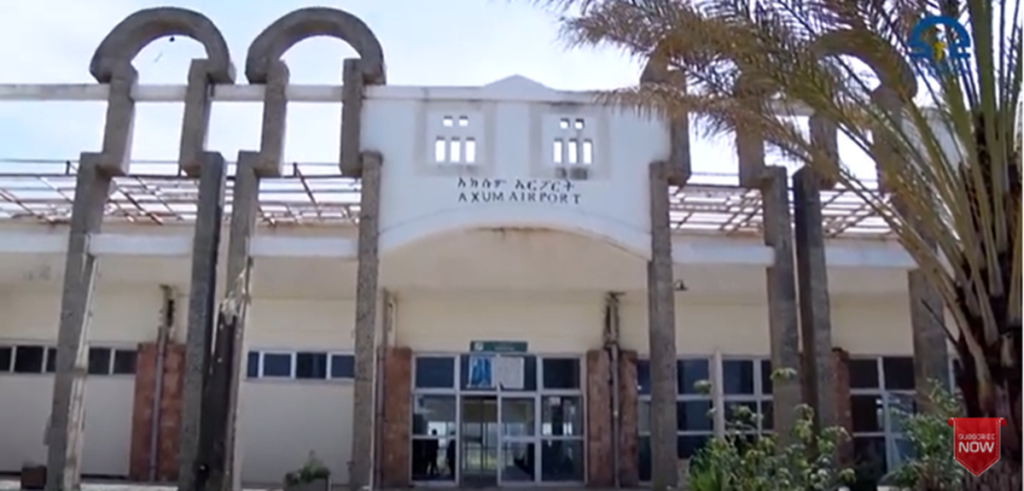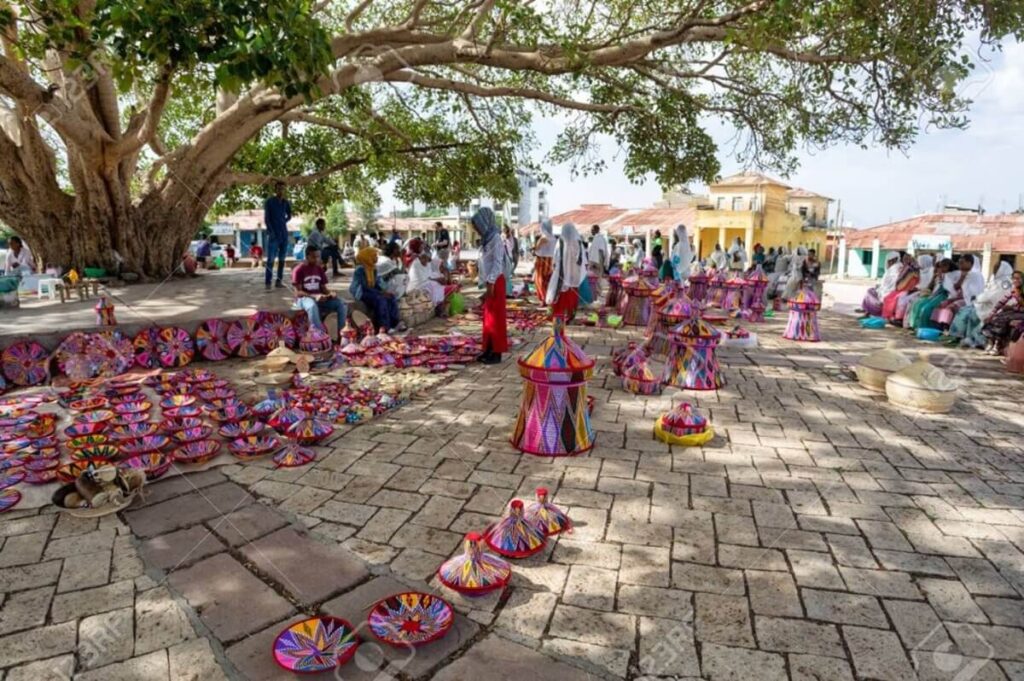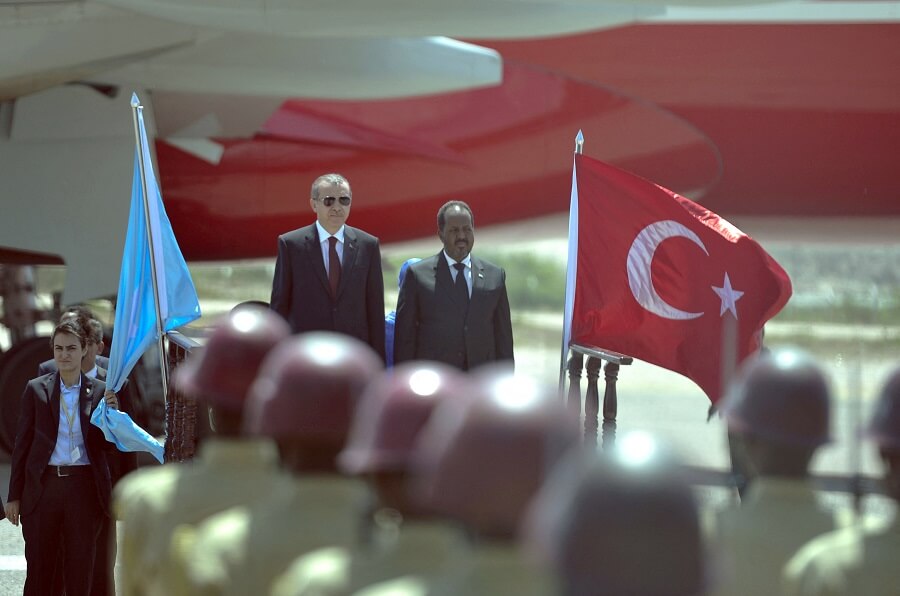In-depth analysis: Tourism industry, local economy faces major setback with the destruction of Aksum Airport during the Tigray war

By Mihret G/kristos @MercyG_kirstos
Addis Abeba – The Aksum Airport, officially known as Emperor Yohannes IV Airport, used to be a vibrant and bustling hub for tourists, playing a crucial role in Ethiopia’s flourishing tourism sector. Constructed with a significant investment of over 526.8 million birr, this transportation facility was essential in facilitating seamless travel and extending a warm welcome to visitors.
However, the devastating Tigray war, which started in November 2020, has reduced the airport to ruins, marking a tragic end to its esteemed position as the primary gateway to the historic city of Axum. Despite one year passing since the war ended, neither the federal government nor the forces in Tigray have taken responsibility for this act.
The closure and heavy destruction suffered by Aksum Airport three years ago have prevented it from resuming operation, leaving the city’s residents without a vital link to the outside world.
The loss of Aksum Airport has had a severe impact on the tourism sector, causing distress among locals and those who previously reveled in the rich cultural heritage and archaeological wonders of the city. Uncertainty looms over the airport’s future and potential reconstruction, prompting concern.
Stakeholders have voiced their concerns regarding the closure of Aksum Airport and its adverse effects on the tourism sector and city residents. Archaeology expert Alay Weldesilase from the Aksum Tourism Office highlights that even before the Tigray War, the industry had already suffered from the impacts of the COVID-19 pandemic.
Despite the peace agreement signed in November 2022, Alay underscores that tourists have been unable to visit Aksum’s historical and archaeological sites due to the absence of airplane transportation resulting from the airport’s destruction.
Devastating impact on residents of Aksum, businesses
The war and the destruction of the airport have brought an economic crisis to the society of Aksum. Many residents relied on income from the tourism sector, selling handicrafts and providing services to visitors from within and outside the country. “The tourism sector was the backbone of Aksum’s economy,” noted Alay.
The destruction of Axum Airport has posed a significant economic crisis, hindering the flow of both local and international tourists to the historic town of Tigray. “Without reliable transportation services, the tourism sector cannot sustain itself,” explained Alay.
Kassa Tesfu, one of the oldest sculptors in Axum, used to sell handmade souvenirs to tourists for 30 years until the war broke out in Tigray. He emphasized the need for government intervention to revive the tourism industry. “Peace is essential,” Kassa stated. “With special attention from the government, Axum can once again become a thriving tourism hub.”
The tourism sector was the backbone of Aksum’s economy.”
Alay Weldesilase, expert at Aksum Tourism Office
It is not only people engaged in handicrafts that are affected by the crisis in the tourism sector of the ancient city. The absence of tourists has impacted the livelihoods of many residents of Aksum who rely on income from the industry, including thousands of people who used to earn their income working as tour guides.
Mekonnen Gebremeskel, a tour guide, says that many tourists have expressed their desire to visit the historical and archaeological sites of Aksum. “Unfortunately, the delay in reconstructing Aksum Airport has prevented them from traveling and experiencing what they desire.”
The absence of tourists visiting Aksum has resulted in economic crises for individuals and businesses in the city. People engaged in selling souvenirs and handicrafts, as well as providing taxi services and working at hotels and restaurants, are suffering from a lack of income. Alay says this has led to social, economic, and psychological problems among residents.
Getachew Abrha, the general manager of Sabean International Hotel, located in the heart of Aksum, and its over 100 permanent and temporary employees are among those affected by the airport’s non-operational state, which disrupted the tourism industry that the city heavily relied upon. Getachew says the hotel used to welcome and serve an average of 80 tourists per day during peak seasons.
“This is no longer the case since the outbreak of the war and the subsequent damage to the airport,” Getachew explained.
He also reveals that the war has not only impacted the tourism sector but has also caused damage to infrastructure and services. “On top of the airport, the telecom and internet connectivity need to be restored.”
Restoring what was lost
Before it ceased operations, Aksum Airport used to be the second-busiest airport in the country, second only to Addis Ababa Bole Airport. Ethiopian Airlines flights would bring tourists to a UNESCO world heritage site and a popular tourist destination at least five times a day.
City officials recall a time when up to 1,000 tourists would visit Aksum during peak season from September to April. They emphasize that returning to these glory days is essential to restoring the city’s prestige.
Previously, approximately 18,000 tourists used to visit Aksum annually, with up to 1,500 foreigners visiting each month, according to Alay. However, since July 2019, there has been a sharp decline in the number of tourists visiting the historical and archaeological sites.
Every year, hundreds of thousands of Ethiopian Orthodox Church followers, as well as tourists, used to visit Aksum in November to celebrate Saint Mary of Zion in Aksum. However, the day has been celebrated in a subdued manner for the past three years.

The residents of Aksum are still traumatized by the horrors of the massacre that occurred on 28 and 29 November, 2020. Eritrean soldiers are said to have killed over one hundred civilians, including residents, displaced individuals from other parts of Tigray, and other visitors who came to commemorate the religious celebration. Such events have diminished the image of the once-vibrant and tolerant city of Aksum.
Not only Aksum city but the entire Tigray region has been inaccessible to visitors since 2020 due to security risks, significantly reducing the earnings the country used to generate from tourists who used to visit UNESCO World Heritage sites and popular tourist destinations such as the Axum Obelisks, Gheralta Mountains, Debre Damo Monastery, and Nejashi, one of Africa’s oldest mosques.
Earlier this week, Addis Standard reported that the regional and federal governments are gearing up to reopen the tourist destinations in the Tigray region and welcome tourists again. In an interview with Addis Standard, Atsbha Gebreegziabher, the head of the Tigray Tourism Bureau, announced plans to launch a tourism rebranding program in collaboration with the Federal Ministry of Tourism. The program is scheduled to commence by the end of this week.
Abebe Brhane, the mayor of Aksum city, emphasizes that the local population is waiting for the reconstruction of the airport as well as the restoration of critical infrastructure and public services so that residents can return to their normal lives. “The federal government should urgently restore the airport and make it accessible for tourists from all around the world,” pleads Abebe.
The mayor of Aksum highlights that the delay in restoring the airport has resulted in a significant economic crisis, along with the impacts of the war and the COVID-19 pandemic. He underscores that the tourism sector is vital for the income of the city’s residents, making the restoration of the airport a priority.
Last year, the Ethiopian Airlines Group announced its intention of repairing and refurbishing the airport’s runway and terminal buildings. Initially, the group had planned to float a tender to select a contractor for the maintenance work during the previous fiscal year; however, financial limitations hindered its ability to do so.
The airport featured a solitary runway and a pair of terminals, one dedicated to domestic travelers while the other catered to international tourists. The international terminal boasted a slightly larger size and offered a wider range of amenities, such as duty-free shops, restaurants, and an exclusive VIP lounge.
In September 2023, the Group issued a tender notice stating their intention to repair Aksum Airport and invited general contractors of level 2 and above to participate. The tender opening was scheduled for 6 October but failed to attract sufficient bidders.
Since the previous bidding attempt was unsuccessful, the Ethiopian Airlines Group was forced to initiate a second tender, which is expected to be awarded soon, according to a source.
Until the maintenance work at Aksum Airport is realized, tourists planning to visit the historic city and its heritage sites by air will be required to travel through the Shire Airport, located 103 kilometers away from Axum. AS







